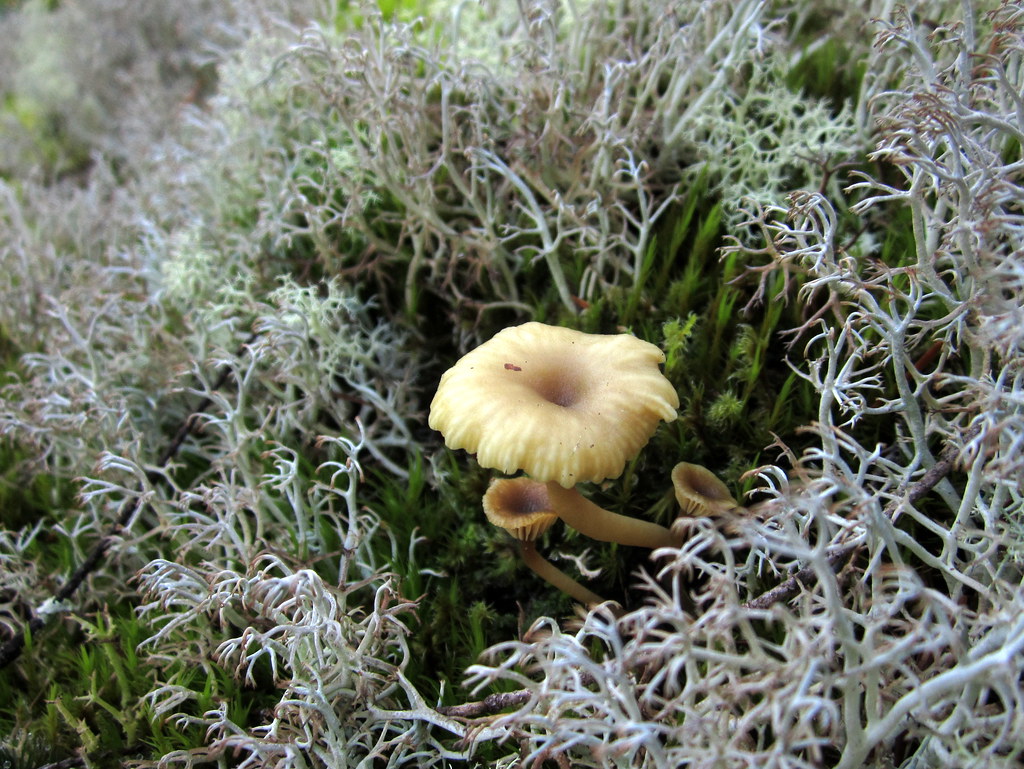#lichenomphalia
Photo

Little orange “mushrooms”
#fungus#mushroom#fungi#artists on tumblr#mycology#nature#lensblr#original photographers#photography#macro#photographers on tumblr#Washington#vsco#pacific northwest#p#they're actually#lichenomphalia#whacky stacky - helicon doesn't like orange
541 notes
·
View notes
Text
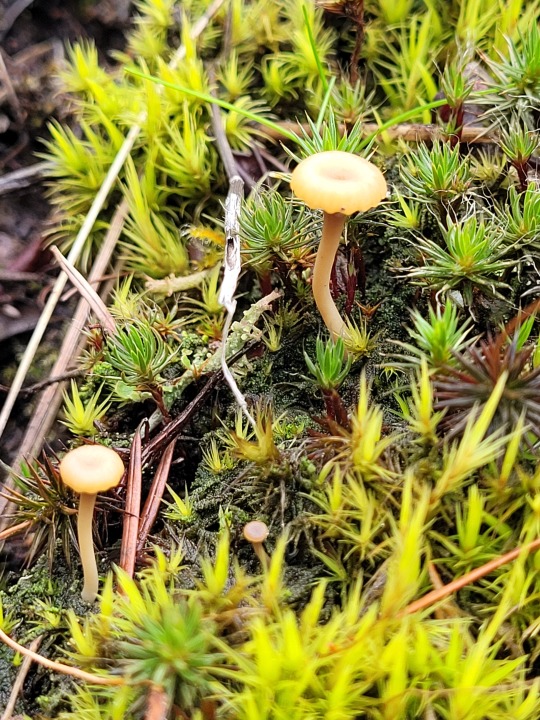
Lichenomphalia sp. (probably ericetorum from the geographical location, cannot confirm).
South-eastern Vancouver island, BC, Canada. March 10, 2024.
Today we have a basidiolichen. Most lichens are a symbiosis between an ascomycete and algae and/or cyanobacteria, but there are a few lichenized basidiomycetes. In Lichenomphalia, the alga component is present at the surface of the soil as a dark green layer of tiny granules (circled in red below).

15 notes
·
View notes
Text

my first time seeing Lichenomphalia ericetorum, a lichen that fruits via mushrooms!
2 notes
·
View notes
Text
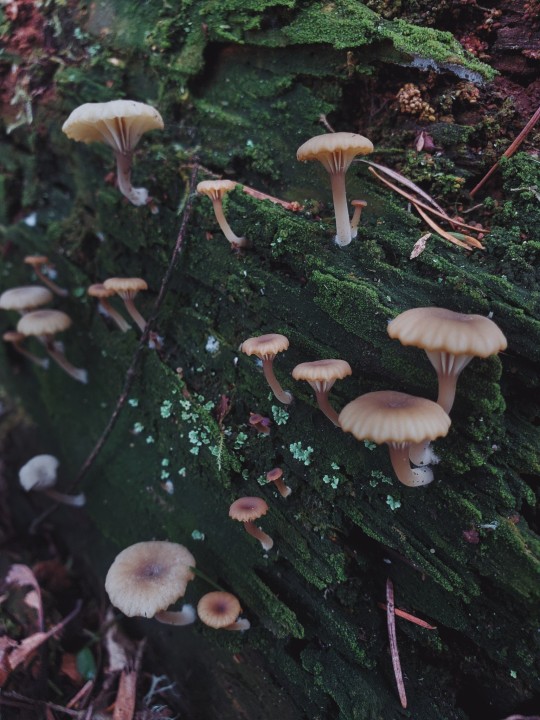
lichenomphalia umbrellifera. these are one of my favorite mushrooms so i was very excited to find this many in one place yesterday
#mushrooms#fungus#mycology#lichen#lichen agaric#mushroomcore#woodland#forest#forestcore#fungi#woodland aesthetic#pnw#pacific northwest#mine#my post#my photos
2K notes
·
View notes
Text


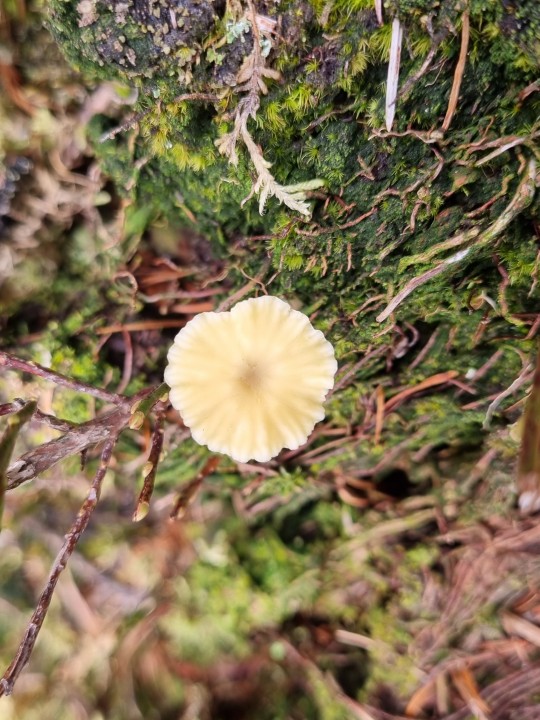

So many Heath navel, Lichenomphalia umbellifera.
#fungi#mushroom#mycology#nature#nature photography#mushrooms#photography#toadstools#forest#dartmoor#yellow#heathland#Heath navel
42 notes
·
View notes
Photo



Lichen Agaric
Lichenomphalia umbellifera
Western Washington, March 16 2023
Photos Mary Howerton (shop)
#mushrooms#fungi#lichen#lichen agaric#mycology#moss#aesthetic#photography#nature#nature photography#original photography#lensblr#photographers on tumblr#tumblr photographers#pnw
302 notes
·
View notes
Text


A while back I drew this lichen dragon! This little creature rarely exceeds a foot long, and uses moss and lichens for camouflage as she traverses her arboreal habitat in search of tasty insects to eat. Young lichen dragons are often green to help them stay hidden, but as they grow older and amass a suitable collection of species to cover them their skin changes to a deeper gray and brown. It's not known how the dragons manage to keep their garden-pelts alive; their skin could exude chemicals that add nourishment to what these epiphytes are able to collect from the air, or they may have an adhesive property that helps them stay on their moving host. Lichen dragons are frequently found basking in sunny openings in the tree canopy which allow their symbiotic partners to photosynthesize more effectively.
The antlers and rostral horn are Cladonia bellidiflora, the back features the fruiting bodies of Lichenomphalia umbellifera, the sides and flanks have some layers of Parmelia sulcata, and the tip of the tail has a tuft of Usnea longissima.
Micron fineliners and Copic alcohol markers.
#dragon#dragons#lichens#fungi#traditional art#illustration#traditional media#Copics#art#fantasy#fantasy art#nature#lichen dragon
77 notes
·
View notes
Text

It’s Tell a Friend Friday!
Please enjoy this photo I took of one of a lichen agaric (Lichenomphalia umbellifera) I took recently; this lichen is very unusual in that its fungal partner still spreads spores via mushrooms rather than more typical lichen apothecia or perithecia.
Then tell someone you know about my work–you can reblog this post, or send it to someone you think may be interested in my natural history writing, classes, and tours, as well as my upcoming book, The Everyday Naturalist: How to Identify Animals, Plants, and Fungi Wherever You Go. Here’s where I can be found online:
Website - http://www.rebeccalexa.com
Rebecca Lexa, Naturalist Facebook Page – https://www.facebook.com/rebeccalexanaturalist
Tumblr Profile – http://rebeccathenaturalist.tumblr.com
BlueSky Profile - https://bsky.app/profile/rebeccanaturalist.bsky.social
Twitter Profile – http://www.twitter.com/rebecca_lexa
Instagram Profile – https://www.instagram.com/rebeccathenaturalist/
LinkedIn Profile – http://www.linkedin.com/in/rebeccalexanaturalist
iNaturalist Profile – https://www.inaturalist.org/people/rebeccalexa
Finally, if you like what I’m doing here, you can give me a tip at http://ko-fi.com/rebeccathenaturalist
#lichens#fungi#mushroom#mushrooms#fungus#nature#ecology#mycology#lichenology#science#scicomm#nature photography#PNW#pacific Northwest#Washington#Washington state
2 notes
·
View notes
Text







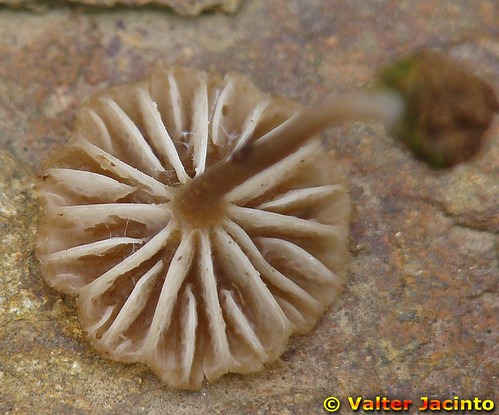
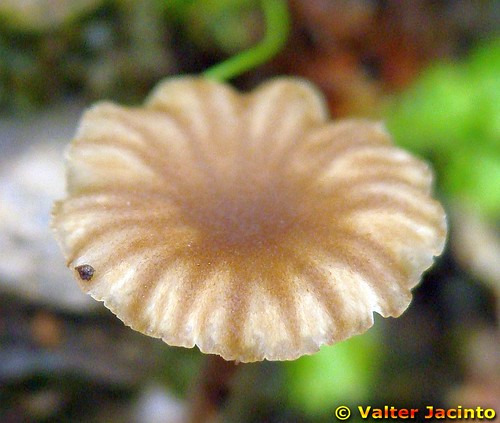
Lichenomphalia velutina
images: source | source | source
55 notes
·
View notes
Text
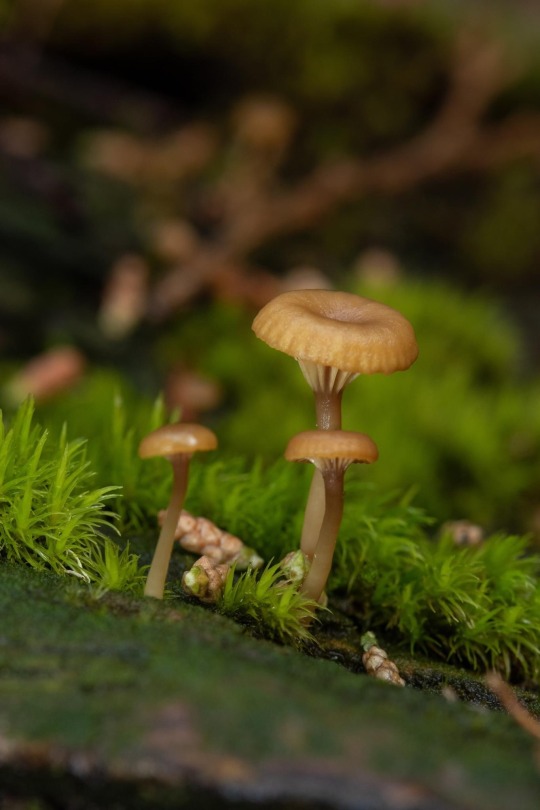
A lichen is a symbiotic organism that is a partnership between a fungus and an alga. The algae photosynthesizes and provides the fungus with carbohydrates while the fungus provides structure and protection from the elements. Most lichens look very little like mushrooms, but this one (Lichenomphalia umbellifera) is an exception. When this lichen reproduces, it sends up fruiting bodies that are gilled mushrooms. The rest of the lichen is the dark green in the foreground which is the algae mixed in with fungal hyphae. Lichens are a love story as old as time.
27 notes
·
View notes
Photo

Lichen agarics (Lichenomphalia umbellifera)
#lichen#lichenomphalia#macro#mushroom#fungi#fungus#mushrooms#artists on tumblr#nature#original photographers#original photography#photography#photographers on tumblr#Washington#pacific northwest#forest#cottagecore#explore#p
944 notes
·
View notes
Video
Lichenomphalia by Chaerea
Via Flickr:
Omphalina ericetorum
10 notes
·
View notes
Photo
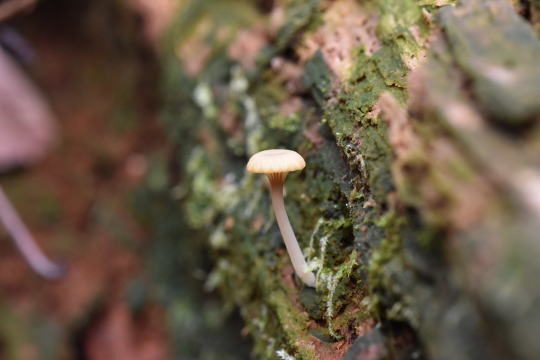
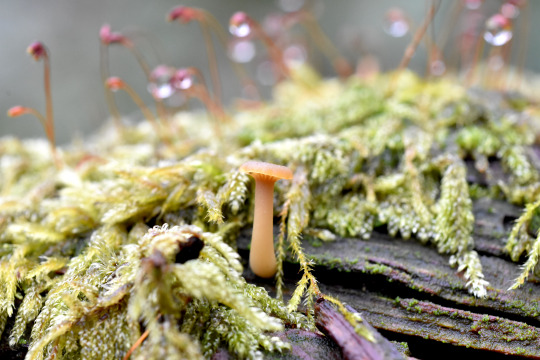
Lichenomphalia umbellifera is one of the few lichens that produces stereotypical mushroom-shaped fruiting bodies. Like other basidiolichens, it developed the ability to commandeer photosynthetic organisms independently of typical ascomycete lichens. Basidiolichens are rare and exciting, making up less than 1% of lichenized fungi. In both photos, you can see a distinct green tinge on the log surrounding the mushrooms. This is part of the lichen, and is similar in function to a wide spread solar panel! The green color comes from chlorophyllous organisms (likely algae or cyanobacteria) entangled in fungal hyphal matter, allowing the fungus to acquire glucose.
83 notes
·
View notes
Note
yo i saw the TINIEST mushrooms yesterday growing straight out of a tree on my campus... they were like 1 or 2mm across the cap, only had like 10-15 gills each and they were growing right out of the bark and the lichen. i physically died they were so adorable and ive been closely inspecting every tree i pass ever since
seeing this ask sent me on an emergency hour long hunt online when i saw it at 3am this morning bc “small mushrooms growing out of/very near lichen”, depending on ur location, could be a basidiolichen!! these are lichens who literally sprout mushrooms to reproduce, and because i’m from iowa where there’s no basidiolichen species i am secondhandedly enthralled and amazed.
in most lichens, the dominant fungus is from the ascomycete family, and the lichen reproduces through a variety of non-mushroom ways (most commonly apothecia). this being said, in 1% (literally an estimated 1%) of all lichens the dominant fungus is from the basidiomycete family (thus the name ‘basidiolichen’), which is the major fungal family that produces mushrooms. therefore, basidiolichens produce little mushrooms of their own. and they are adorable
the problem with basidiolichens is that there just isn’t a whole lot of information on them out there. like, there’s no book of all the basidiolichens in the world, there’s not a whole lot of studies....like lichens in general, they follow the trend of just like....being Mysterious in what we know about them. there are a few subarctic species through canada and in the northern united states, but most of the species are in the tropics/in south america; one of the best studied species is the Dictyonema lichen family, which are native to the Andes. they’re also apparently psychoactive, and like honestly they look exactly like how i would expect a psychoactive lichen to look

unfortunately, this family is also one of those Lichen Rabbitholes you dont want to go down lmao
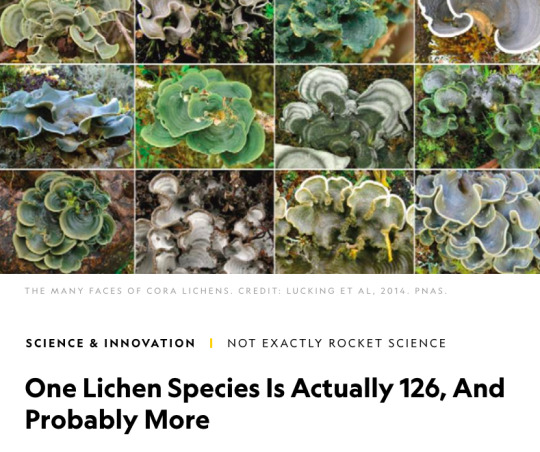
like. of course they are. why would we even consider a lichen to be normal for even 3 seconds. why would we even assume it was one species. we are fools who have learned nothing and they taunt us for our hubris each and every day
annnnyway idk where you are but i would check out the Lichenomphalia genus, which is less tropical and more common. here’s an example from australia, narrowed down to just a member of this genus (notice that this species doesn’t have any noticeable thallus right around the mushrooms themselves; this is because the main thalli send fungal hyphae a little bit away through the substrate to produce fruiting bodies):
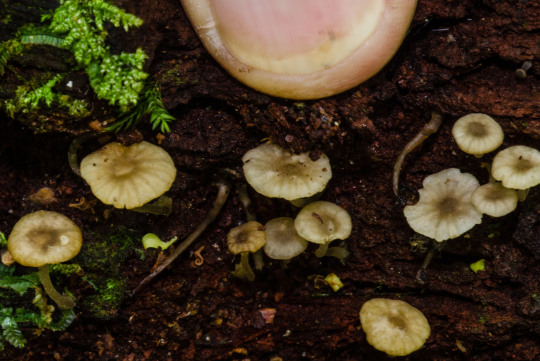
here’s a full list of basidiolichen observations (with pictures) from the lovely mushroomobserver website if you want to take a look! other then that, i also can’t rule out that they’re just some Very Cute Tiny Mushrooms, which wouldn’t be surprising; lichens and fungi generally hang out in the same kind of areas. but still. it would be cool. if mushroom lichen
#idk it would be REALLY COOL IF MUSHROOM LICHEN#or maybe they're just cute lads hanging out#havin a good time#but basidiolichens man#ive never even seen one in person#asks#plont asks#lichens#Anonymous
526 notes
·
View notes
Photo
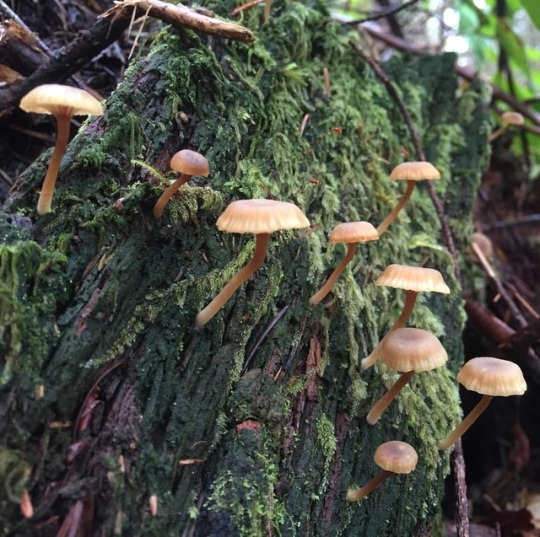
A whole bunch of Lichenomphalia umbellifera. #mushroom
1 note
·
View note
Photo




LICHEN AGARIC (Lichenomphalia umbellifera): lichen appearing as a green tinge or blobs on old wood and producing small hygrophanous mushrooms with decurrent gills.
Western Washington, late February 2022
#MushroomMonday#mushroom#mushrooms#fungi#fungus#mycology#lichen#moss#green#nature#photography#photographers#original photography#original content#photographers of tumblr#nature photography#lichen agaric#PNW#forest floor#sporecore
489 notes
·
View notes
